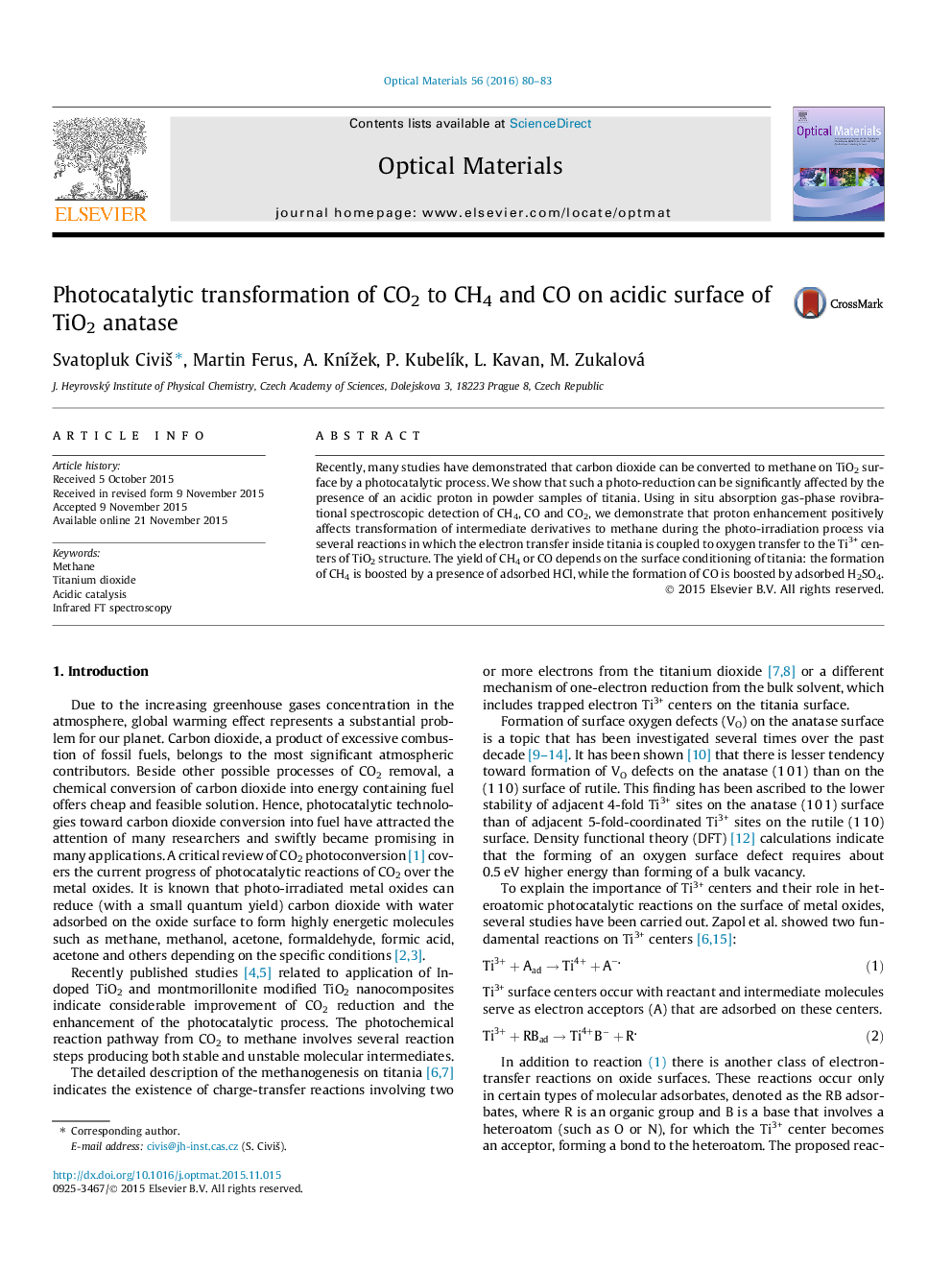| کد مقاله | کد نشریه | سال انتشار | مقاله انگلیسی | نسخه تمام متن |
|---|---|---|---|---|
| 1493263 | 1510778 | 2016 | 4 صفحه PDF | دانلود رایگان |
• CO2 reduction to CH4 is more efficient in presence of adsorbed protons.
• Titania prepared by hydrolysis of TiCl4 calcinated at low temperature is very efficient material.
• In absence of any acid methane concentration remained under detection limit.
Recently, many studies have demonstrated that carbon dioxide can be converted to methane on TiO2 surface by a photocatalytic process. We show that such a photo-reduction can be significantly affected by the presence of an acidic proton in powder samples of titania. Using in situ absorption gas-phase rovibrational spectroscopic detection of CH4, CO and CO2, we demonstrate that proton enhancement positively affects transformation of intermediate derivatives to methane during the photo-irradiation process via several reactions in which the electron transfer inside titania is coupled to oxygen transfer to the Ti3+ centers of TiO2 structure. The yield of CH4 or CO depends on the surface conditioning of titania: the formation of CH4 is boosted by a presence of adsorbed HCl, while the formation of CO is boosted by adsorbed H2SO4.
Figure optionsDownload high-quality image (137 K)Download as PowerPoint slide
Journal: Optical Materials - Volume 56, June 2016, Pages 80–83
